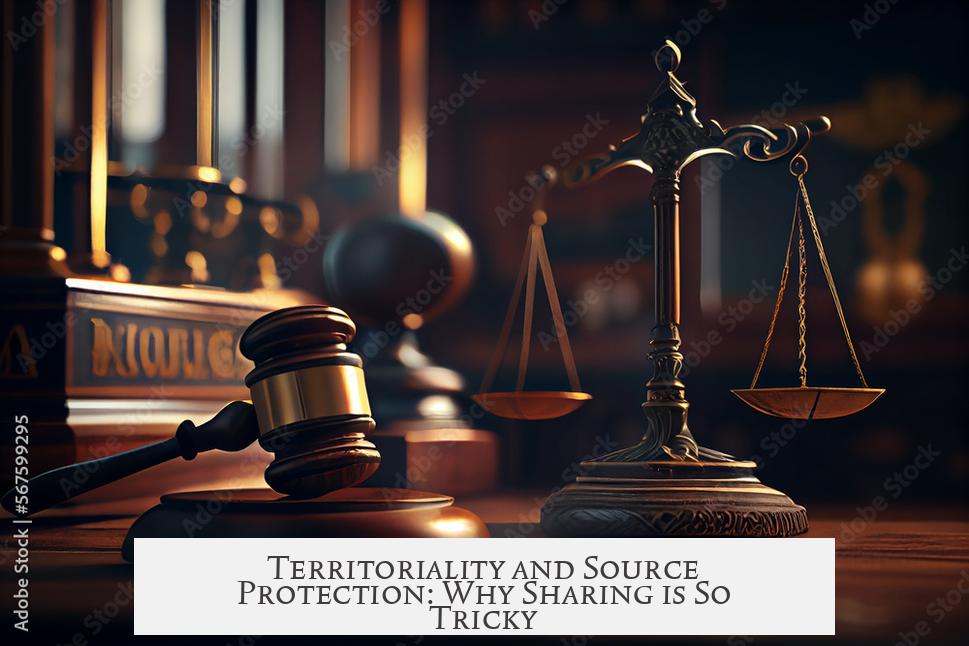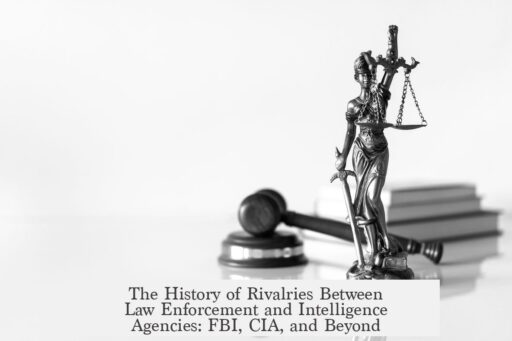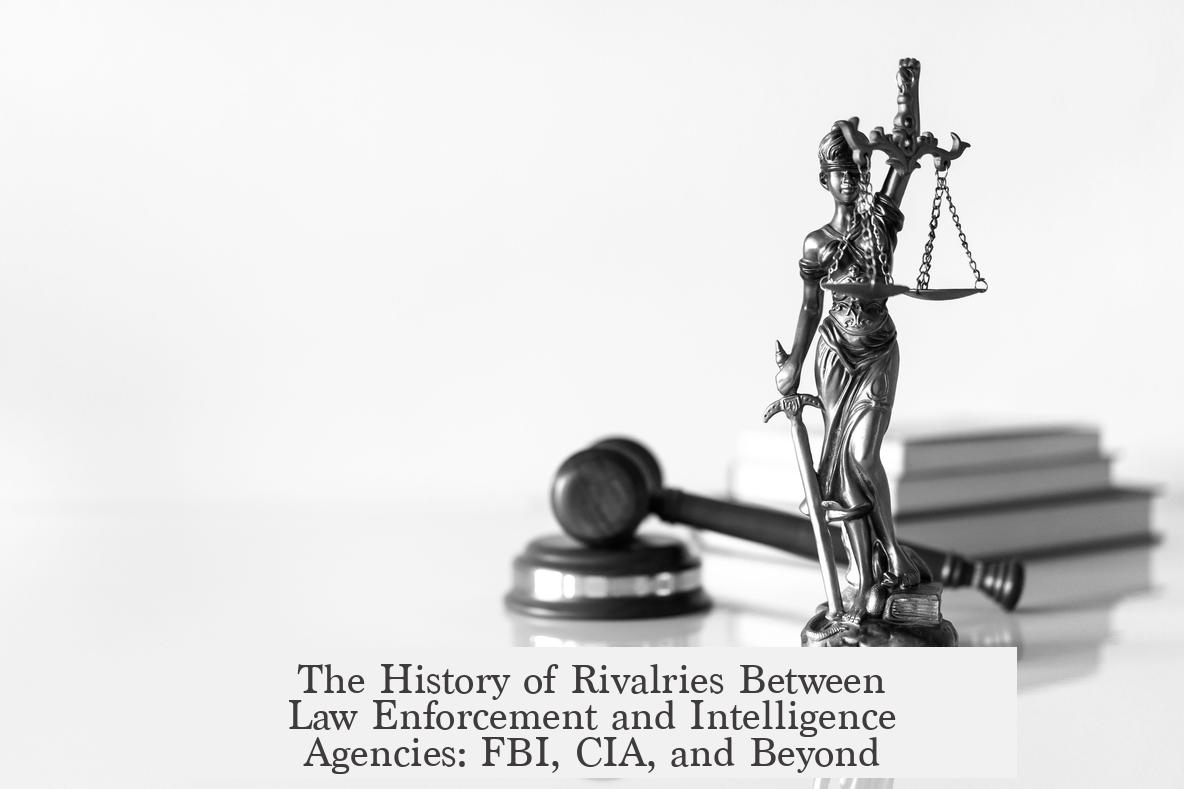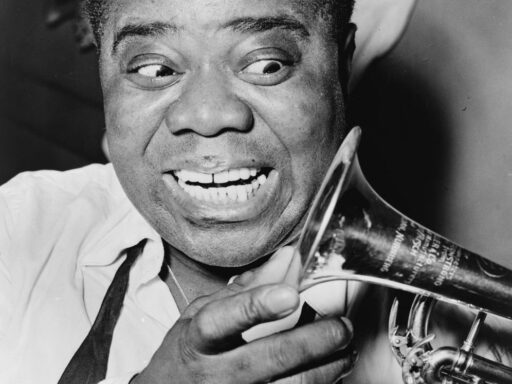The history of rivalries between law enforcement and intelligence agencies, such as the FBI and CIA, stems from competing missions, territorial disputes, and the drive to protect sources and budgets. This rivalry dates back to World War II and reflects ongoing tensions in organizational culture and authority.
The roots of the FBI-CIA rivalry trace to World War II. The CIA’s forerunner was the Office of Strategic Services (OSS), led by William “Wild Bill” Donovan. The FBI was a younger agency then, gaining influence under Director J. Edgar Hoover. Hoover and Donovan had frequent clashes during the war over jurisdiction and control, leading to a lasting enmity between their agencies.
After the war, the OSS was dissolved. In 1947, President Truman created the CIA to centralize foreign intelligence. The CIA was charged with international espionage, while the FBI retained control over domestic intelligence and law enforcement. This division of responsibilities was a source of frustration for both agencies, which felt constrained and jealous of the other’s domain.
Hoover continued to assert the FBI’s role aggressively. One notable episode was the Venona Project, a top-secret effort led by the FBI with allied support to decrypt Soviet messages. Despite the significance of the intelligence gathered, the FBI refused to share it with the CIA, further deepening mistrust between the agencies.
The rivalry largely revolves around territoriality and the protection of sensitive sources. Multiple agencies with overlapping missions tend to guard their information jealously. Cooperation is hampered by fears that sharing intelligence could expose sources or compromise years of work. This reluctance is compounded by internal competition for budget, power, and prestige.
In practical terms, the FBI focuses on domestic counterintelligence and crime investigation. The CIA operates abroad, collecting intelligence on foreign threats and conducting covert operations. These distinctions create natural friction points, as each agency considers its methods superior or more appropriate for national security.
Beyond the FBI and CIA, this pattern is common in other nations. For example, Britain’s MI5 and MI6, responsible for domestic security and foreign intelligence respectively, have experienced their own turf disputes. These reflect challenges in managing overlapping mandates within national security frameworks.
In recent decades, the relationship between the FBI and CIA has improved. Post-9/11 reforms fostered increased intelligence sharing and coordination. However, historical animosities still influence organizational cultures subtly. Conflicts between civilian agencies and military intelligence, as well as foreign versus domestic focuses, continue to shape interactions.
| Key Aspects of Law Enforcement/Intelligence Agency Rivalries |
|---|
|
Territorial disputes are central to these rivalries. Each agency believes it can manage its mission better alone. Intelligence requires secrecy, so agencies hesitate to share for fear of losing control or exposing sensitive operations. The very act of sharing intelligence risks damaging long-running investigations or compromising valuable sources.
Source protection is especially critical. Revealing the identity or methods behind a source can endanger lives or close critical intelligence channels. Agencies compete not just to gather intelligence, but to protect these human and technical assets. This creates a protective mindset that inhibits openness.
Budget competition is another factor. Agencies vie for funding to justify expansions of staff, technology, and operational scope. The perception of exclusive control over intelligence responsibilities supports arguments for increased budgets. This financial dimension often drives inter-agency rivalry.
During the Cold War, these tensions were exacerbated. The FBI’s domestic investigations often overlapped with counterintelligence missions that the CIA conducted abroad, creating confusion over jurisdiction. Hoover’s controlling style entrenched the FBI’s position, while the CIA pushed for greater autonomy and resources.
By contrast, recent decades saw reforms encouraging cross-agency cooperation. The creation of the Director of National Intelligence (DNI) in 2004 aimed to coordinate these agencies under a unified intelligence community. Joint task forces and intelligence fusion centers improved information sharing. Still, each agency retains a strong identity and sometimes competes internally for influence.
The rivalry also reflects structural distinctions: the FBI is law enforcement with arrest powers; the CIA is a foreign intelligence service with covert capabilities. These functional differences create cultural gaps. FBI agents are police officers, emphasizing due process; CIA officers specialize in espionage, often operating in legal gray zones outside U.S. borders.
Ultimately, the history of rivalries between agencies like the FBI and CIA is a story about the challenge of balancing cooperation with agency autonomy. This balance is critical for effective national security, but difficult to achieve because of competing missions, cultures, and bureaucratic interests.
- FBI-CIA rivalry began during World War II between OSS and FBI leadership.
- Post-war intelligence division split domestic and foreign responsibilities.
- Territoriality and source protection drive secrecy between agencies.
- Competition for budgets and power reinforces rivalry and independence.
- Similar tensions exist internationally, such as between MI5 and MI6.
- Modern reforms improved collaboration but historical distrust continues.
- Distinct agency missions and cultures complicate full cooperation.
The History of Rivalries Between Law Enforcement and Intelligence Agencies: FBI vs. CIA and Beyond

What is the history of rivalries between law enforcement and intelligence agencies like the one between the FBI and the CIA? Simply put, it’s a story about power struggles, jealousy, territorial disputes, and the murky boundaries of secret work. This rivalry traces back to World War II and continues to echo in modern intelligence operations.
But the story isn’t just about FBI and CIA; other countries have their own versions, showing rivalry is a natural side effect of secretive, high-stakes work.
A Rocky Start: World War II Sparks the Rivalry
It all begins in the 1940s. The FBI, under the iron-fisted direction of J. Edgar Hoover, was still finding its footing. Simultaneously, the Office of Strategic Services (OSS) led by “Wild” Bill Donovan operated as America’s wartime intelligence agency. They didn’t exactly join hands and sing kumbaya. In fact, their relationship was more like sparring partners in an endless cage match.
Hoover, known for being jealous and petty, clashed constantly with Donovan. They tussled over jurisdiction and influence. These early battles planted the seeds of an institutional rivalry that would survive the war.
When World War II ended, the OSS dissolved, and Hoover’s FBI stood alone—but not for long. In 1947, President Truman created the CIA from the OSS’s ashes to tackle international intelligence. The FBI got assigned domestic counter-intelligence. This clear division of labor might sound neat, but nobody liked their boxes.
Hoover didn’t just accept his limited scope quietly. He kept the battle alive. For instance, during the famous Venona Project — an effort where the FBI cracked some of the toughest Soviet codes — Hoover refused to share key intel with the CIA. His cold shoulder towards cooperation illustrates how rivalry bred secrecy and mistrust.
Territoriality and Source Protection: Why Sharing is So Tricky

At first glance, the rivalry might seem like old-fashioned bickering. But it goes deeper than that. Agencies guard exclusive control like treasure. Why? Because intelligence work depends on trust, secrecy, and sources that risk everything to provide information.
Imagine if one agency hands over a source to another — and that info gets mishandled. The source might get compromised, arrested, or worse. Protecting sources means protecting lives. That creates a natural reluctance to share critical information freely.
Plus, agencies don’t just battle over secrets. They compete for budget and power. Each wants to prove its indispensability to lawmakers. Protecting turf ensures they keep their staff paid and their influence intact.
The Modern FBI and CIA: Getting Along with a History
Fast forward to today. The FBI and CIA officially operate with clearer boundaries and more cooperation than ever before. There’s mutual need — terrorism and international crimes aren’t so easy when agencies don’t talk.
However, the ghosts of Hoover and Donovan—their territorial instincts—still linger. Friendly competition persists, mostly around domestic intelligence for the FBI versus foreign intel for the CIA. This divide sometimes causes confusion and overlapping investigations.
Interestingly, rivalries also exist beyond FBI-CIA lines. Military and civilian intelligence agencies sometimes clash over authority and information. These shifts often depend on political leadership and national priorities.
Across the Pond: MI5 vs. MI6 Turf Wars

Oh yes, the British have their own turf battles! MI5 and MI6 have tussled too. MI5 focuses on domestic security, while MI6 handles foreign intelligence. Historically, during the decline of the British Empire, their missions overlapped and sometimes collided.
These turf wars reflect a universal theme: intelligence agencies are territorial by nature. When secrecy meets bureaucracy, friction is almost inevitable.
Why Should You Care?
You might wonder: why should citizens care about agency rivalries? Because rivalries can hamper intelligence effectiveness. In the worst cases, turf battles delay actions or cause crucial information to slip through the cracks. Often cooperation between agencies saves lives and stops threats.
On the flip side, competition also drives agencies to sharpen skills and innovate. A little rivalry can mean better results, if kept in check.
Lessons and Takeaways
- Clear boundaries matter. Defining who handles domestic vs foreign intel reduces clashes.
- Sharing needs secure platforms and trust. Without guarantees of source protection, sharing remains tricky.
- Leadership sets the tone. Presidents and agency heads can ease or inflame rivalries through policy and culture.
- Watchdog roles help. Oversight encourages collaboration and transparency.
So next time you hear about espionage dramas, remember it’s not just cloak and dagger but also about competition over turf, power, and secrets. And some rivalries, no matter how much times change, just never die.
Curious about other intelligence rivalries or how modern tech changes the game? Stay tuned. Intelligence is as much about people and politics as it is about gadgets and codes.




